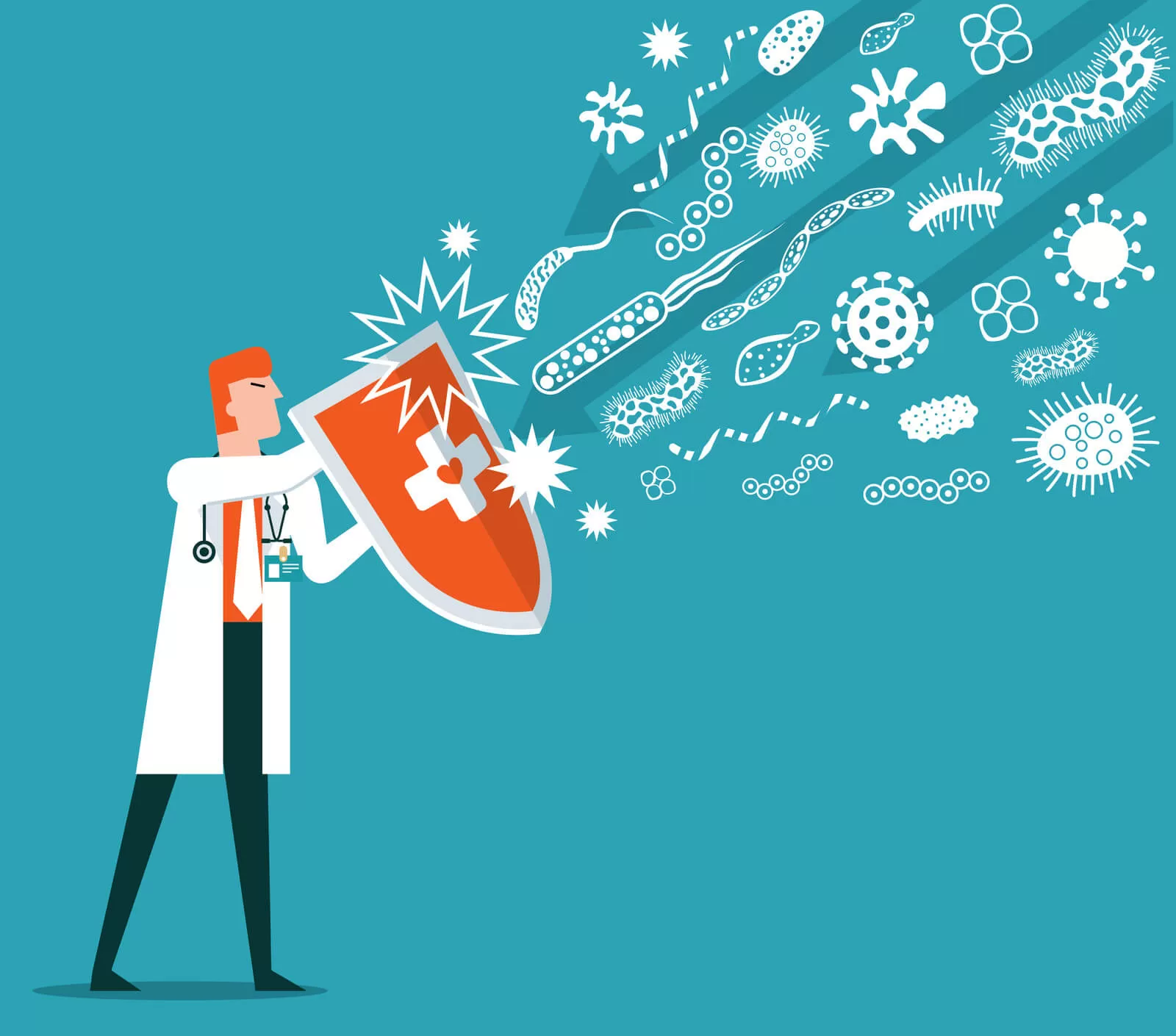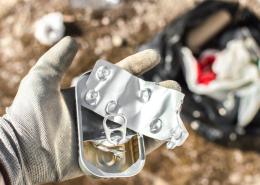How the Immune System Protects You From Infection

The immune system’s job: defend against disease-causing microorganisms. Its goal is to keep us healthy. The immune system is a vast and complex interconnected network of many different organs, cells and proteins that work together to protect the body from illness. A healthy immune system can defeat invading disease-causing germs (or pathogens), such as bacteria, viruses, parasites—as well as cancer cells—while protecting healthy tissue. Understanding how the immune system works and how we can help protect our bodies is essential to the fight against the COVID-19 pandemic.
Our immune systems
There are two main parts of the immune system.
Innate immunity is the immune system that you inherit and it’s active as soon as you’re born. It mainly consists of physical barriers on and in the body—think skin and the lining of the gastrointestinal tract. There are also specialized immune cells that quickly attack pathogens that enter our body. The main feature of the innate immune system is to respond quickly, which can lead to inflammation and fever. It does not recognize specific strains of bacteria or viruses; it attacks broadly, which is why it is unable to get rid of all pathogens.
The immune system also learns things—this is called acquired or adaptive immunity. When your immune system is exposed to a new germ for the first time, it responds by trying to fight it off—which means you may become sick. But afterward, the immune cells will remember the invader and be better equipped to fight it, should it return.
The key players of the immune system
One of the most important players in our immune systems is the white blood cell, also called a leukocyte. Leukocytes patrol the blood and tissues throughout the body in search of intruders. When they detect a foreign substance, they send out signals and launch an immune attack. These disease-fighting cells are made in the bone marrow and are stored in many different places in the body such as the tonsils and adenoids.
There are two types of leukocytes: phagocytes and lymphocytes. Phagocytes engulf the intruders, break them down and chew them up. Lymphocytes are further broken down into two more types. The B lymphocytes (or B-cells) create antibodies and alert the T lymphocytes (or T-cells) to kill the pathogens.
White blood cells are a part of the lymphatic system, a network of lymph vessels that collect excess fluids from tissues throughout the body and then return them to your bloodstream. The lymphatic system and lymph nodes (small bean-shaped organs clustered in the neck, armpits, abdomen and groin) act as filters and trap harmful germs. If immune cells in the lymph node recognize pieces of a germ, they will activate, replicate and leave the lymph node in search of those harmful germs. Lymph nodes often become swollen due to an active immune response, which is why doctors check them for signs of infection.
How the immune system is activated
Anything that triggers an immune response is called an antigen. An antigen can be a microbe such as a virus, bacteria, toxins, chemicals or other substances that come from outside the body. If the body comes into contact with an antigen for the first time, it will store information about the germ and how to fight it.
If an antigen enters the body and B-cells recognize it (either from having had the disease before or from being vaccinated against it), B-cells will produce antibodies. When antibodies attach to an antigen (think a lock–key configuration), it signals other parts of the immune system to attack and destroy the invaders. This is how the human body develops immunity (acquired) to a particular disease.
But some germs and viruses are very adaptive. They figure out ways to change over time and sneak into our bodies, which is why flu shots are recommended every year.
Why vaccines matter for COVID-19
Vaccines prompt the immune system to make disease-fighting antibodies, which give you the benefit of acquired immunity without having to get sick first. They do this by introducing antigens in the form of an inactivated or killed virus into the body in order to stimulate the immune system. Exposing the body to antigens triggers an immune response and the production of antibodies, which can lead to a lasting memory that can help it fight infections in the future.
In the case of the new coronavirus, it has never been seen in humans, which means people who contract it may have to go through the full immune process to fight it off. Because COVID-19 may lead to serious health effects for some, many people have gotten sick, and many others have lost their lives.
Among those who tend to fall the most ill are people with compromised immune systems either because of older age, underlying medical conditions, medications or other factors. Having a weaker immune system can make people less able to fight off sickness, which puts them at a higher risk of complications from COVID-19.
Yet, if all of us had a way to teach our bodies to fight the virus so that we could skip the sickness, that could help the world move closer to a healthier place. Already, research is underway to find the right vaccines to allow that to happen.
References:
- https://www.niaid.nih.gov/research/immune-system-overview
- https://www.niaid.nih.gov/research/immune-response-features
- https://www.niaid.nih.gov/research/immune-cells
- https://medlineplus.gov/ency/article/000821.htm
- https://www.cdc.gov/vaccines/hcp/conversations/downloads/vacsafe-understand-color-office.pdf?fbclid=IwAR1n8hXXk_ZJtbiu7yfGW9sUiIiIsK68HVgASBrFQreMogRqIcyP8bVtBFY
- https://www.ncbi.nlm.nih.gov/books/NBK279364/
- https://www.cdc.gov/coronavirus/2019-ncov/need-extra-precautions/people-at-higher-risk.html?CDC_AA_refVal=https%3A%2F%2Fwww.cdc.gov%2Fcoronavirus%2F2019-ncov%2Fspecific-groups%2Fhigh-risk-complications.html
![]()





